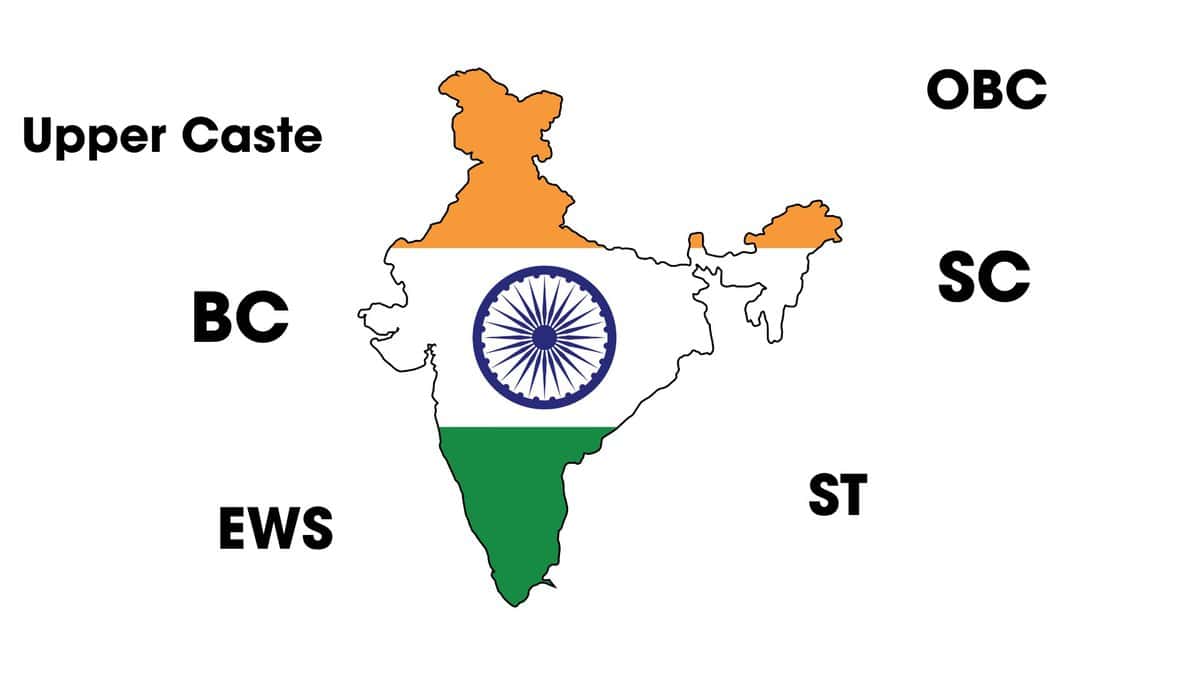
The recent release of Karnataka’s Socio-Economic Educational Survey (SEES 2015) findings, popularised as the Caste Census 2015, has been drawing nationwide attention particularly owing to the timing of its release almost a decade after it was conducted. The controversy and data questioning has particularly been fuelled by the fact that the findings were unfavourable for the powerful and dominant sections of the state as it called for a re-ordering of the reservation categories.
Similar undertakings scrutinising demographics of the state such as caste and religion, particularly examining them from an economic lens such as education and income divides, etc., have previously been done in Andhra Pradesh, Telangana, and Bihar. While these initiatives have been interchangeably referred to as state census, legally they cannot be recognised as a census. Constitutionally, only a national level data collection initiative conducted by the union government constitute a census. Therefore, the caste data collection done by states independently is mandated to be called a survey.
Why does this matter? Since these surveys don’t fall under the provisions of the Census Act, 1948, the constitutionally guaranteed data confidentiality does not apply to those being conducted by the states. This means that verification processes can be in place. Further, as Prof. Amitabh Kundu noted, since this survey doesnot fall under the Census Act, the data collected cannot be used for resource allocation, rendering the exercise largely futile. Considering the communal elements and sensitivity surrounding the data being collected, this lack of confidentiality could result in biased responses in addition to fuelling divisive policy making.
Why are caste surveys?
This brings to the forefront the question of what the need for these surveys is. And should the results of this data then remain confined to official government eyes or publicly disseminated? Data collection on this front could assist governments in taking steps towards identifying the disadvantaged groups and take appropriate affirmative actions to that effect.
However, an obvious implication of caste-centric data focus, whether limited to the governments or made publicly available, is the fortification of caste-based identity. Instead of moving towards a caste-less society, such surveys are deepening caste consciousness and solidifying identity-based politics. The growing demands for redistribution of quotas have triggered resentment among caste subgroups themselves as well.
Public dissemination of the data collected could lead to misuse at the grassroots levels for instigating agitational politics. Institutions, in particular, bear the brunt of divisive local propaganda as the demand for employment or enrolment proportional to socioreligious prevalence of the respective communities increases. Bihar is a clear indication of this. Following the Bihar survey, a bill was formulated in the state in 2023 for enhanced quotas in government jobs and educational institutions. This included 20% for Scheduled Castes, 2% for Scheduled Tribes, 18% for Backward Classes, 25% for Extremely Backward Classes, and 10% for the Economically Weaker Section (EWS) among the Upper Castes. The previous 3% Backward Classes women quota was removed. The quota cap of 65% was replaced to 75%.
Loss of the meritocratic system could severely impact the quality of output from these institutions.As recognised by the Andhra Pradesh chief minister who propagated a skill survey as a substitute,so as to promote skill development and economic progress. He noted that “poverty is the biggest issue. Even if you belong to a weaker section and if you have money, the society will respect you. If you are from an upper caste and don’t have money, nobody will respect you. Wealth is a big leveller.”
However, it should be noted that the drawback of mapping caste and religion data without giving the public access, is the potential for electoral misuse.Through inflation of data or partial interpretations, political parties can craft narratives to secure seats on the basis of positioning candidates that comply or belong to the dominant social group.
Caste data is reactionary
Political discourses are increasingly being based on religious othering and identifying minority groups by religious status. The “backward” Hindu castes are compelled to believe they require to secure their own status. Caste data is bringing in defensive mechanism within individual social groups, ensuring that affirmative action benefits aren’t diluted under a broader “Hindu” identity. For instance, rather than uniting people under the “Hindu” identity, the Karnataka SEES serves as a counter exposing intra-Hindu inequalities—especially the disproportionate power held by the Vokkaligas and Lingayats, who comprise less than one-fourth of the population.
The Telangana survey, released in February 2025, revealed crucial insights about caste structures within Indian Muslims as well. Muslim OBCs constituted 10.08% of the total OBC population in Telangana which stood at 56.33%. This demonstrates that nearly 80% of Telangana’s Muslim population self-identified as having Shudra caste roots and believe that they continue to experience caste-based discrimination and economic exploitation. The data reinforced that caste is not exclusive to Hinduism; it is an Indian social structure that persists across all religions. Although pre-dating historical conversions of the backward castes to Islam during the Nizam rule, caste narratives and reform advocacy for Islamic backward communities are not yet visible. This attests to the role of leaders politicising the broader “Muslim” identity and deepening religious divides.
Following the surveys, introduction of terms such as Hindu BC and Muslim BC in Bihar and Karnataka, is seeing the unification of the two BC subgroups to ensure their benefits are not diluted in favour of other caste groups. The inclusion of backward Muslim communities such as Pasmandas in the OBC quota once the poverty and under- representation of this group was highlighted, reinforces the caste-religion interconnection. This inclusion into the OBC is building inter-religious caste solidarities challenging the Hindu-Muslim binary. This trade-off between caste and religious consciousness particularly speaks to the contrast in prevalent outlook towards caste and religion between North and South India.
Final thoughts
While the recent wave of caste surveys in India serve as a means for affirmative action and deepening an understanding of the demography, they also underscore the underlying caste and religion complexities in the contemporary socio-political landscape. The surveys fuel identity-based divisions and bring forward the need for safeguard mechanisms against politicisation and misuse of data. As India continues on a path towards equity and representation, how data is used, or misused, will determine whether we are headed towards a progressive or regressive society.
Anandini Gupta is a Research Fellow at the Centre for Development Policy and Practice (CDPP), with work experience in finance and communications. She has a Bachelor’s degree in Math/Financial Analysis and Risk Management from the University of Waterloo, Canada. Her areas of interest include gender, culture, and developmental finance.



